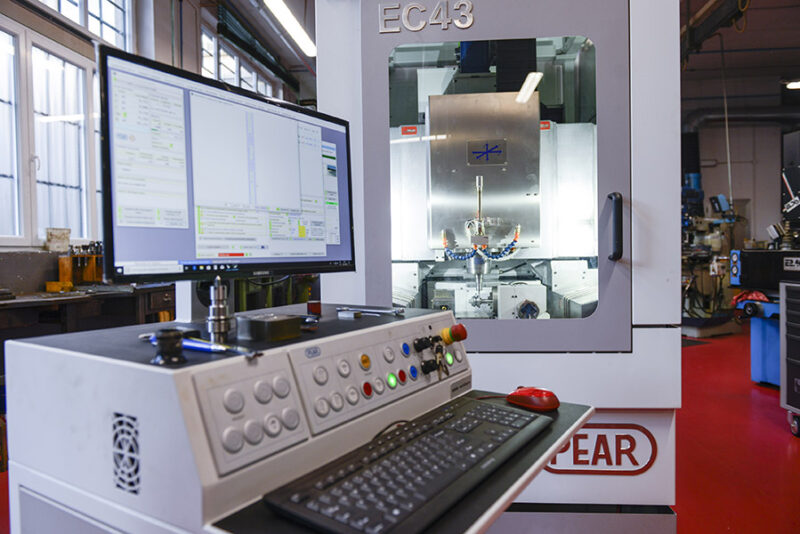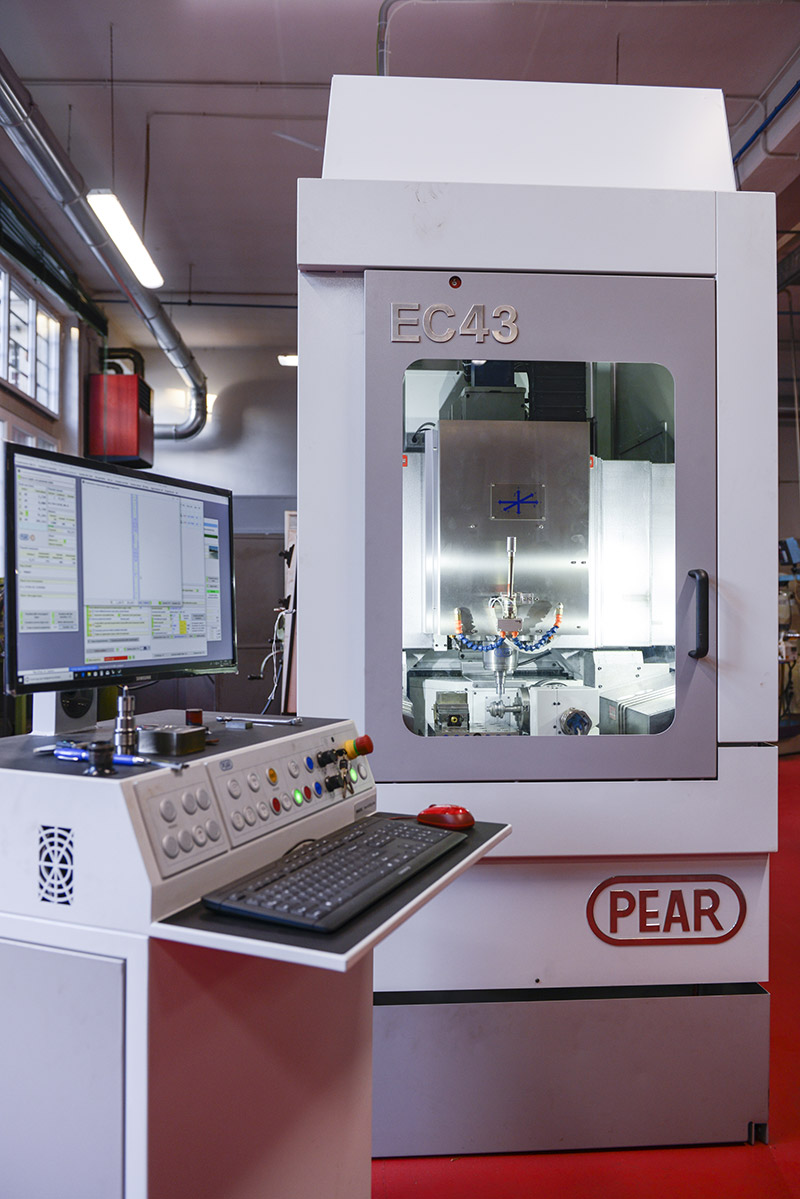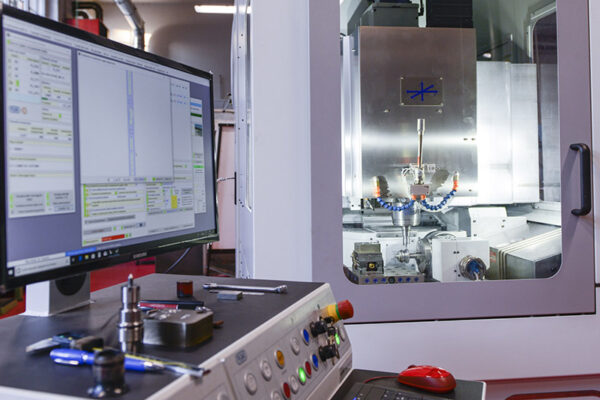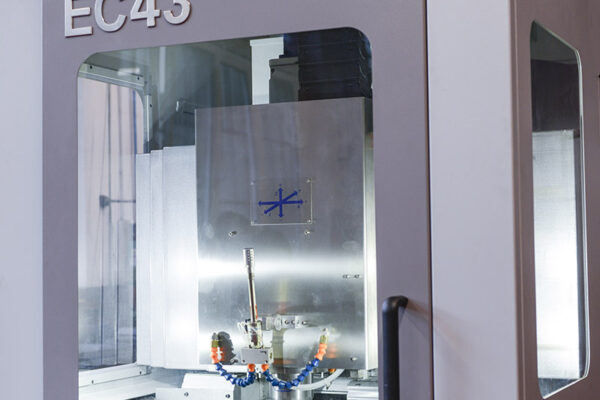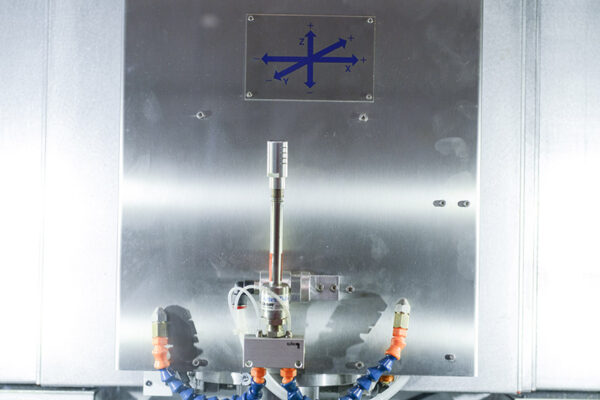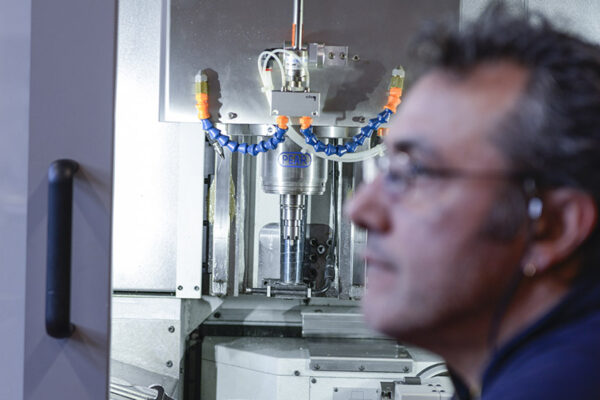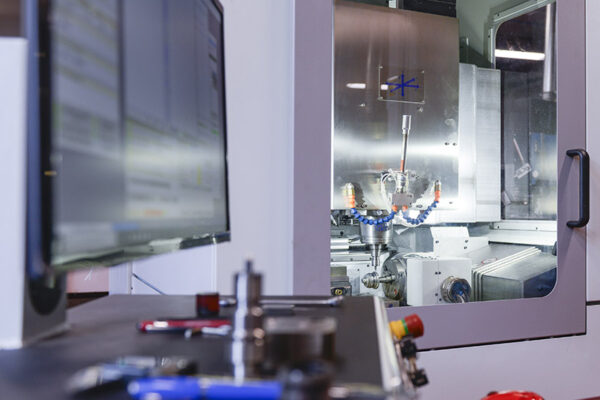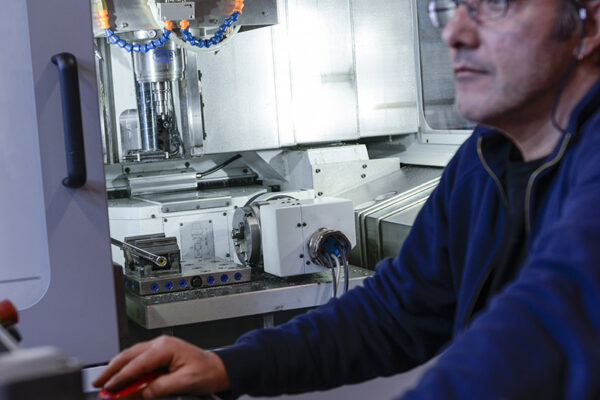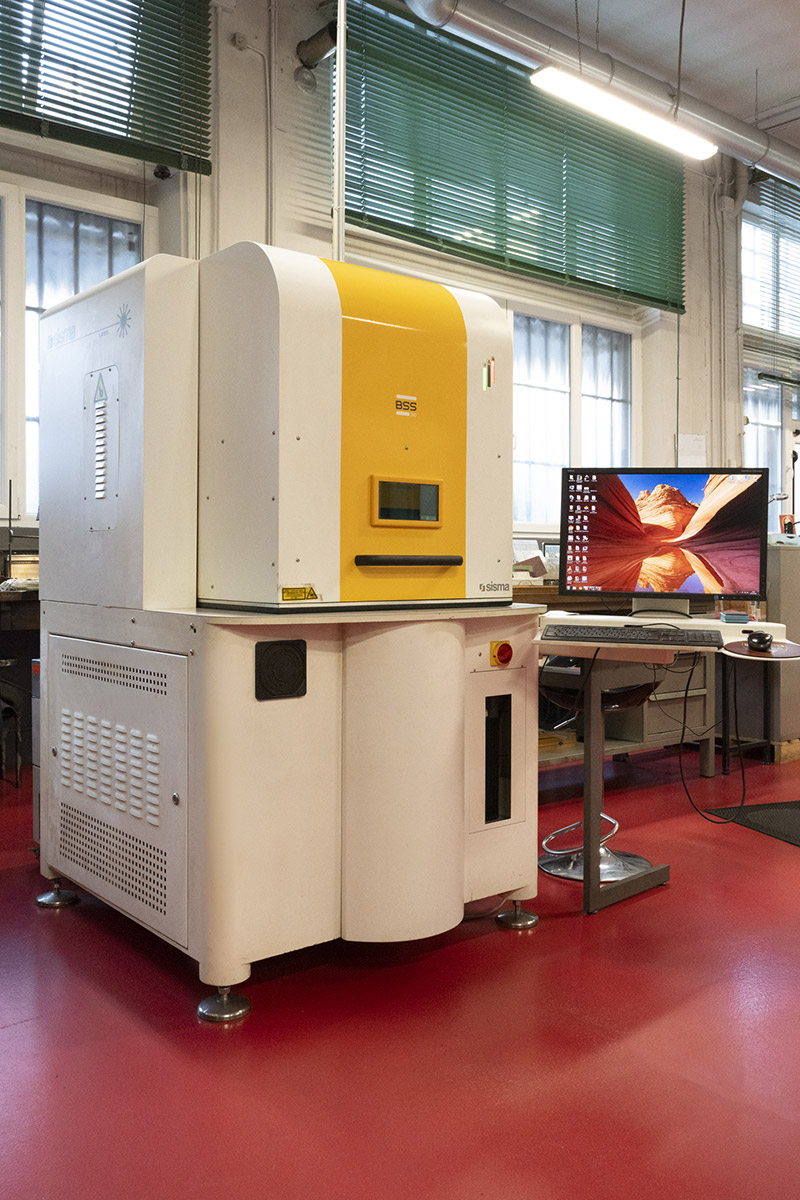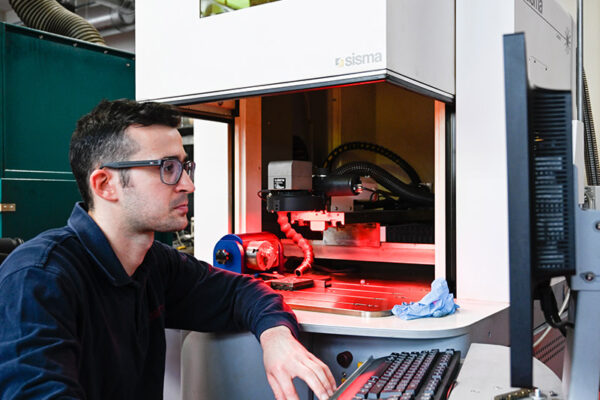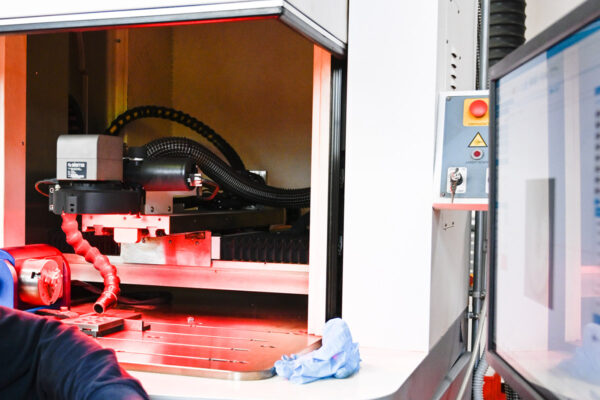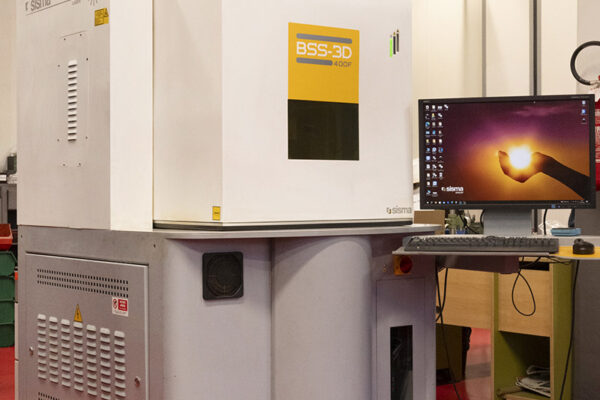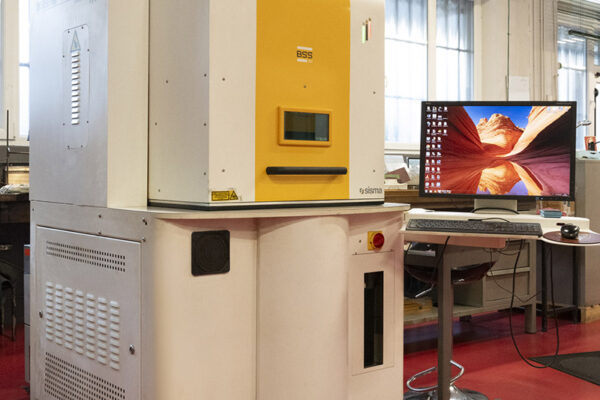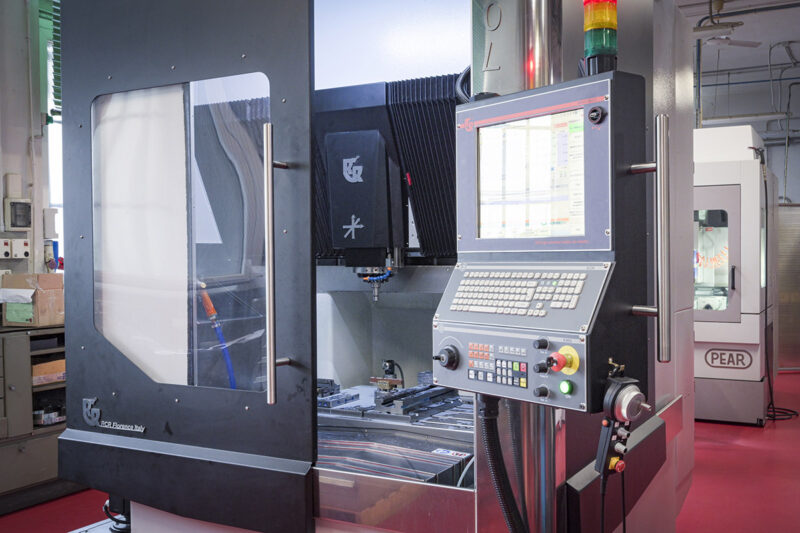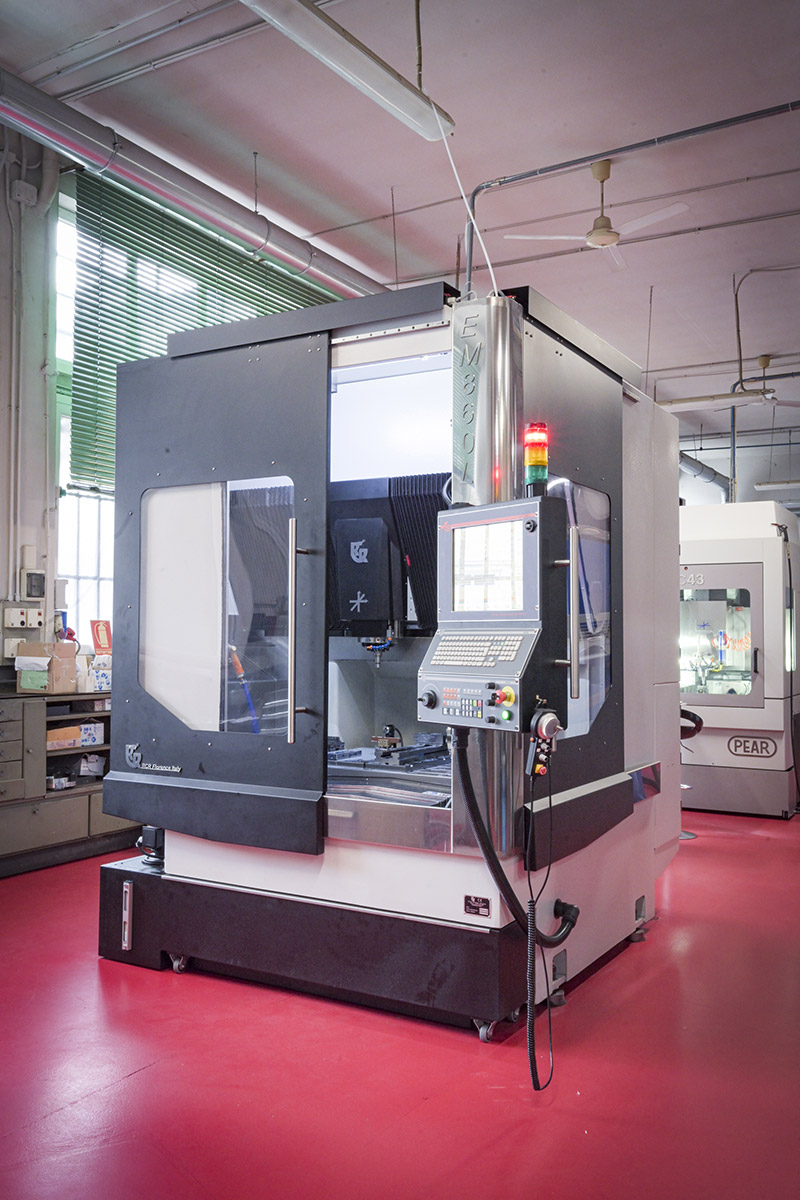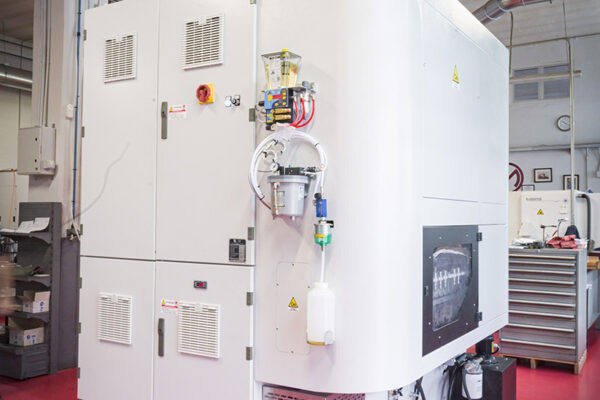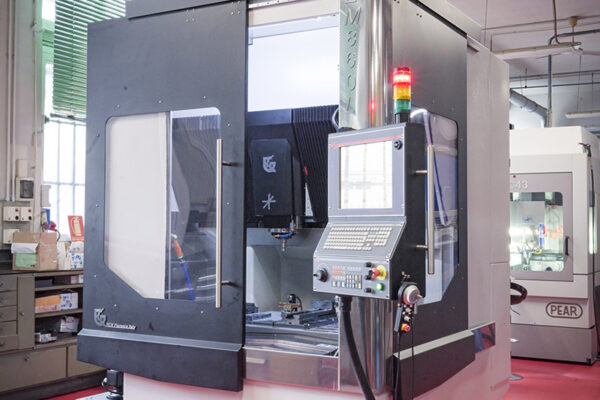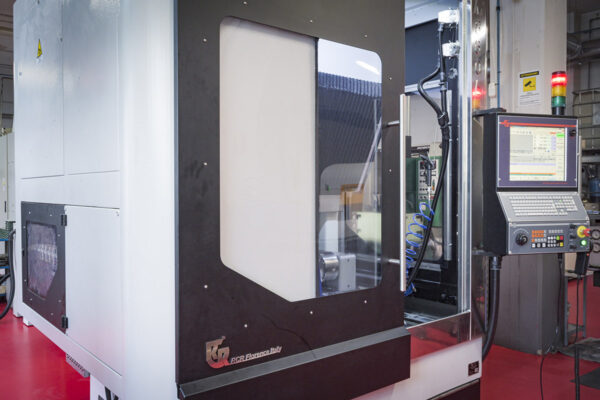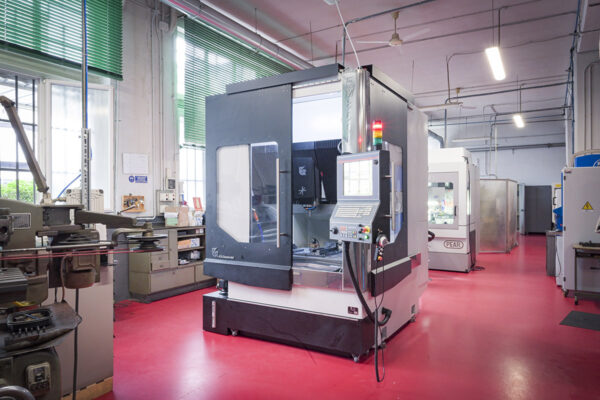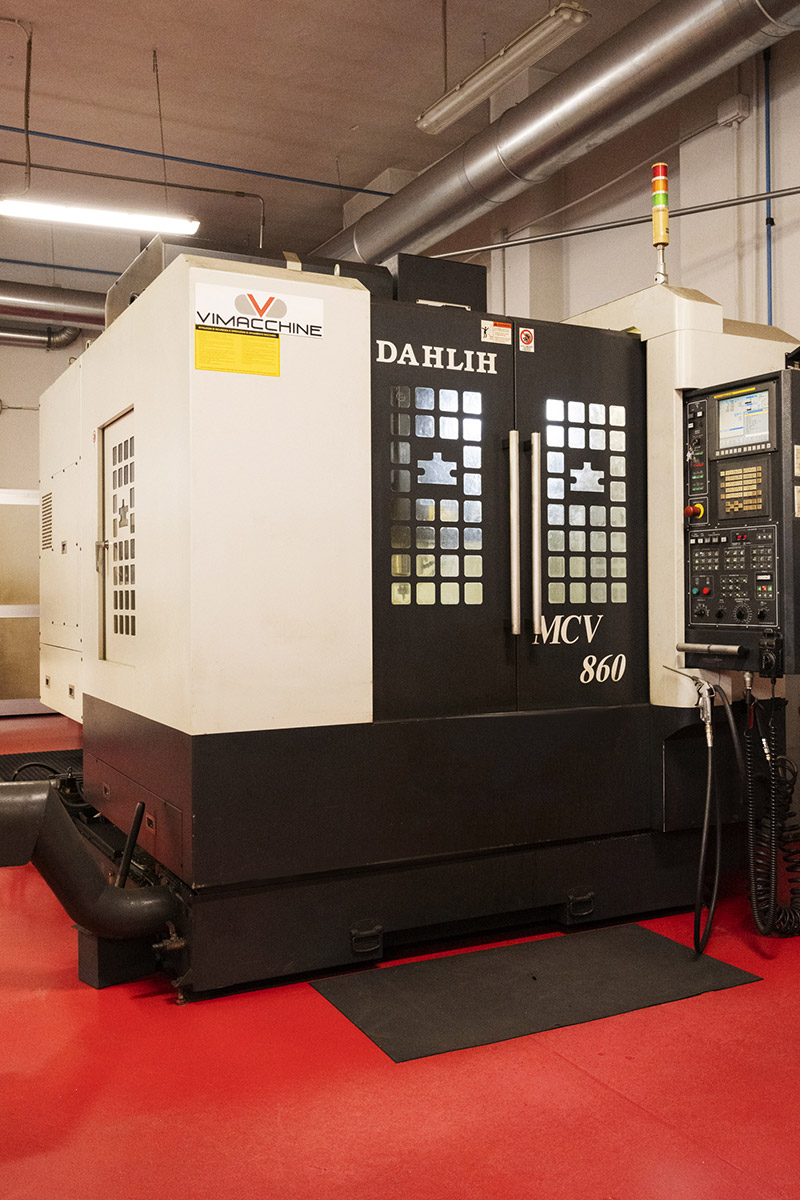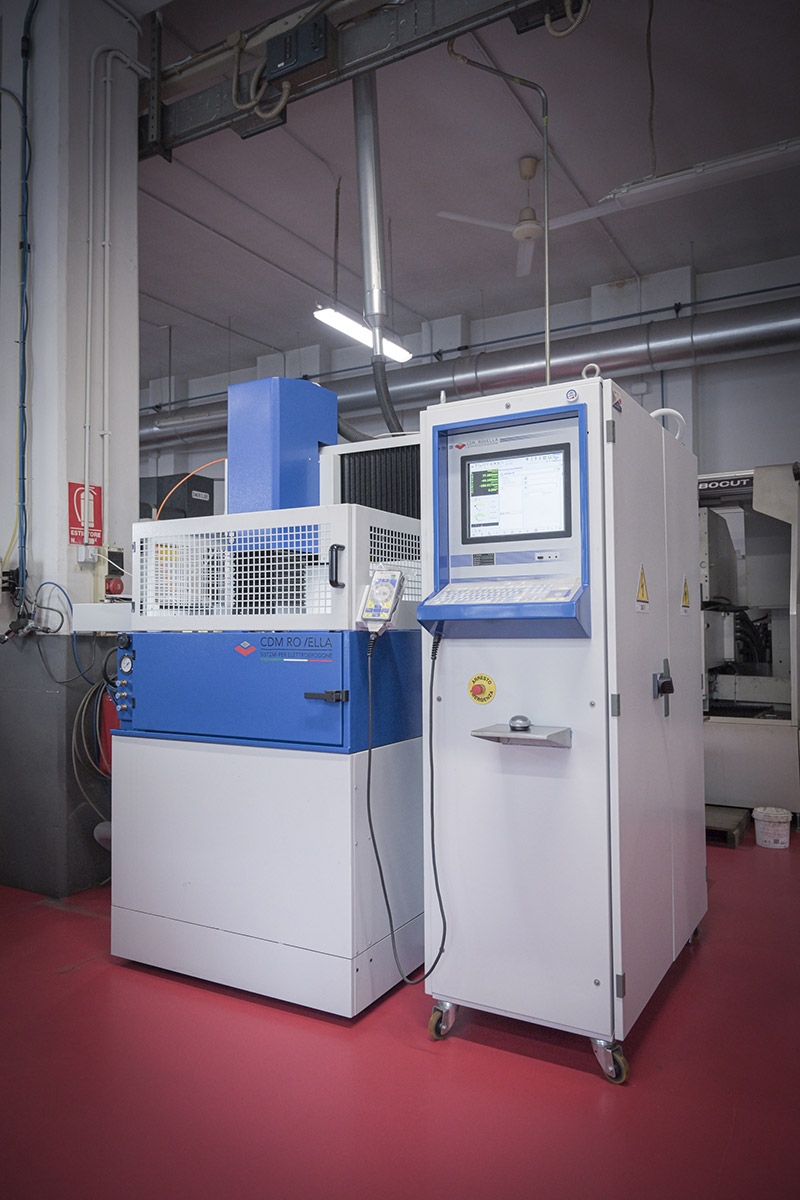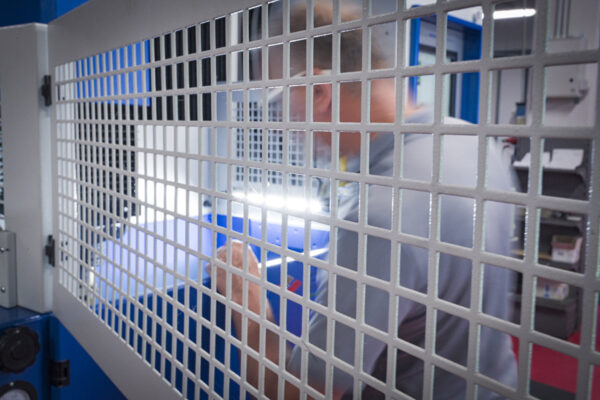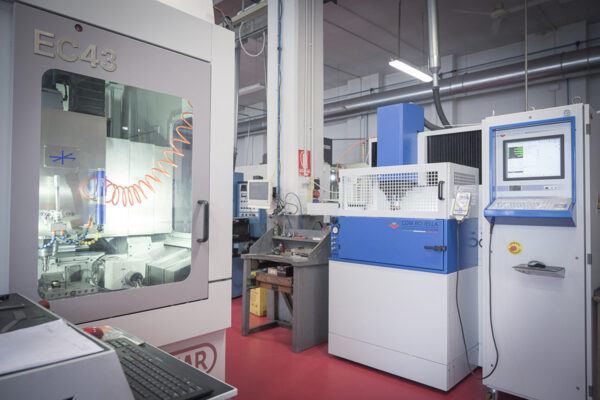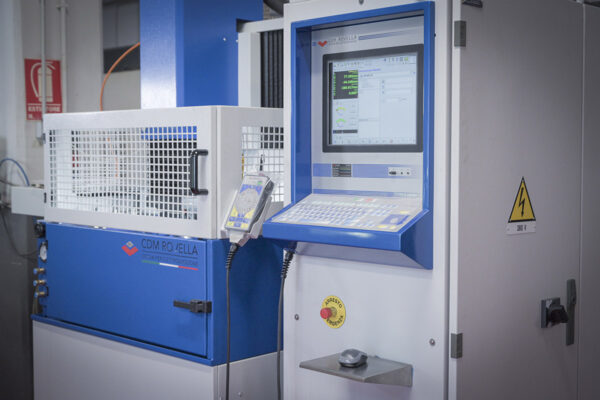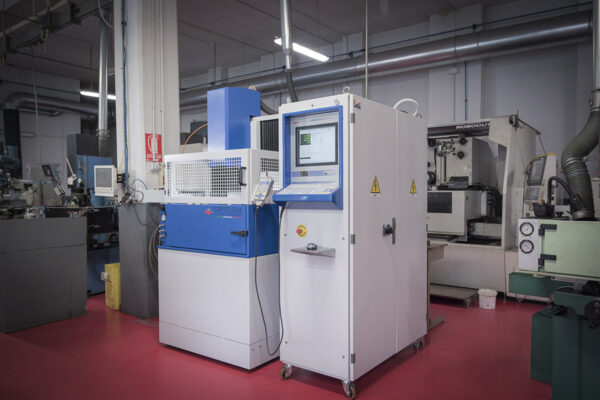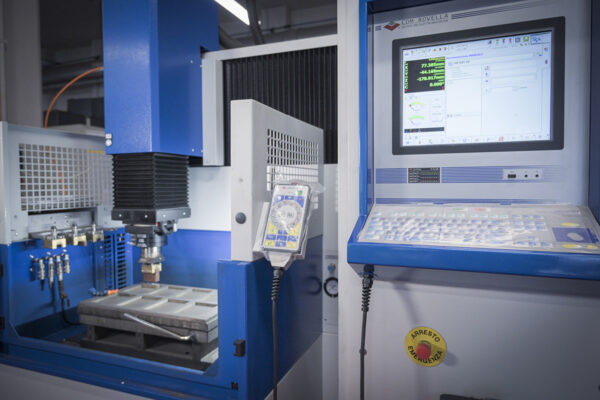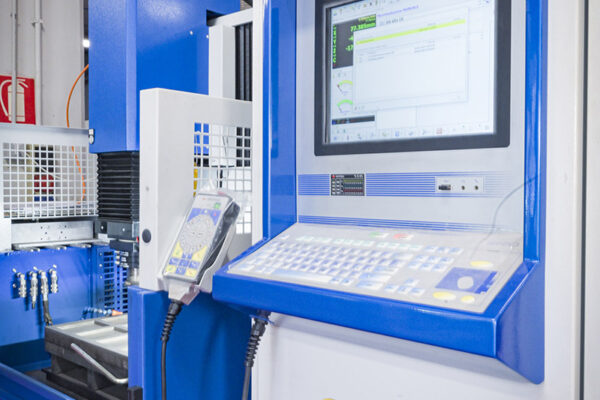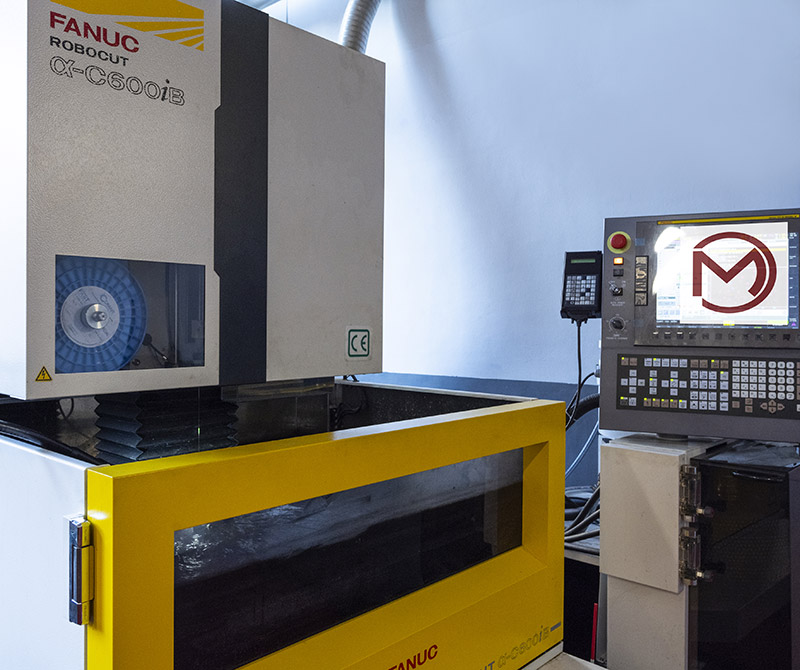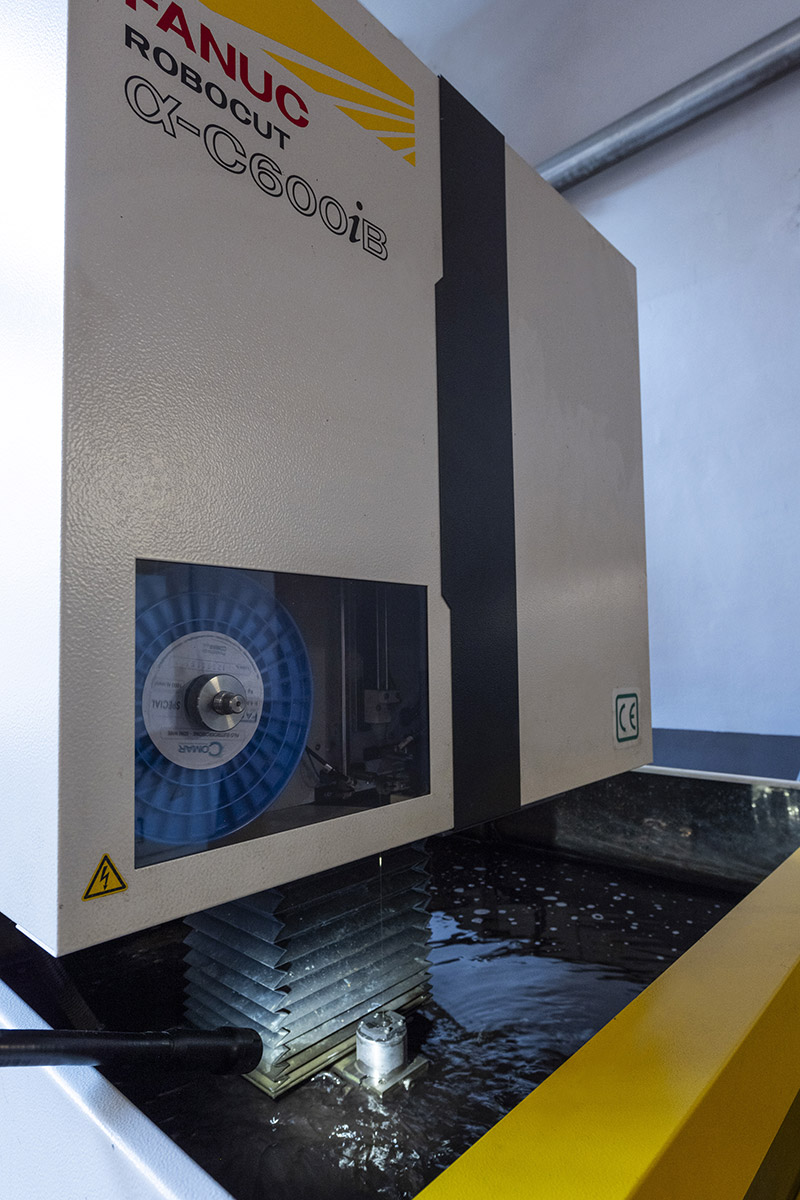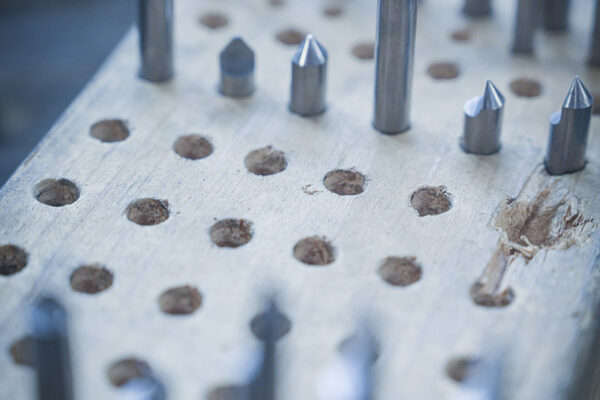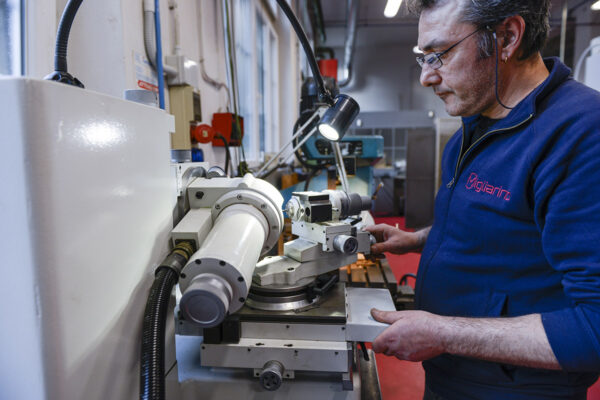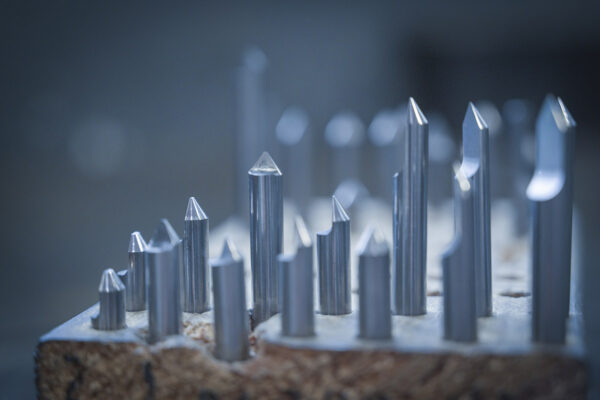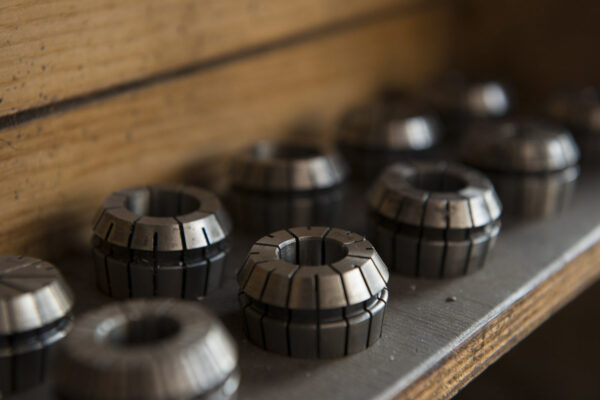Machinery
We carry out the entire production cycle in-house
From mechanical processes to surface treatments to internal hardening.
Every day, we work with perseverance and commitment to improve ourselves and achieve our next goals.
Pear EC43 CNC Pantograph
The Pear EC 43 CNC pantograph, short for “Computer Numerical Control”, is a machine used for engraving, marking, milling, and other machining operations using an automated computer-operated system. This machine is capable of producing parts or components with high precision and repeatability as it can be programmed to meet specific production requirements. The Pear EC 43 pantograph has a table equipped for various working ranges, and a continuous rotary table for the fourth axis, to machine parts with a diameter of up to 300 mm.
It also comprises a control software to define the operations to be performed, a numerical control unit that processes the data and coordinates machine movements, and a mechanical system consisting of linear and rotary axes, which move according to the instructions provided by the software.
MATERIALS & SECTORSApplications
The main applications of CNC pantographs include the production of customised parts, the machining of materials such as steel, brass, aluminium and plastics, the production of prototypes and models, as well as the mass production of components with complex geometries.
There are many benefits to using a CNC pantograph, including increased accuracy in detail, enhanced production efficiency, the ability to process various materials, and less human error. These machines are widely employed in industries such as mechanical engineering, mould making, rapid prototyping, and many other fields that require precise and efficient machining.
Sisma Laser
The company owns two SISMA BBS laser CNC machines, triple axis laser marking systems, both equipped with a continuous IV axis rotary table for markings on diameters up to 100 mm.
These are compact, robust stand-alone machines that guarantee durability, precision and stability over time. The range of sources of these lasers make it possible to do engravings, deep engravings, markings, surface processing and micro-cutting processes that comply with the highest state-of-the-art standards.
These systems use laser technology to create high quality markings on a wide range of materials, including metals, steel and plastics, as well as composites with light/dark contrast surfaces.
Lasers make it possible to obtain precise markings and stamps with finely refined details, which are ideal to mark codes, logos, texts and graphics, barcodes and QR codes.
Laser marking and engraving systems are used in industry because they perfectly meet the needs of the sector. The applications are countless. The latest solutions include tracking markings, anti-counterfeiting and micro-writing.
RCR High Speed CNC Milling Machine EM 860 L
The EM 860 L CNC pantograph, short for “Computer Numerical Control”, is a machine used for engraving, marking, milling, and other machining operations using an automated computer-controlled system. This machine is capable of producing parts or components with high precision and repeatability as it can be programmed to meet specific production requirements. The EM 860 L pantograph has a table equipped for different working ranges, and a continuous rotary table for the fourth axis, for machining parts with a diameter of up to 300 mm.
It also comprises a control software to define the operations to be performed, a numerical control unit that processes the data and coordinates machine movements, and a mechanical system consisting of linear and rotary axes, which move according to the instructions provided by the software.
MATERIALS & SECTORSApplications
The main applications of CNC pantographs include the production of customised parts, the machining of materials such as steel, brass, aluminium and plastics, the production of prototypes and models, as well as the mass production of components with complex geometries.
There are many benefits to using a CNC pantograph, including increased accuracy in detail, enhanced production efficiency, the ability to process various materials, and less human error. These machines are widely employed in industries such as mechanical engineering, mould making, rapid prototyping, and many other fields that require precise and efficient machining.
CNC Milling Machine
A CNC (Computer Numerical Control) milling machine is a machine tool used to remove material from a workpiece using rotary movements of cutting tools controlled by the computer through a set of numerical instructions.
This technology makes it possible to produce components and parts with high accuracy and repeatability. CNC milling machines are widely used in different industries such as manufacturing, aerospace, automotive, and electronics for prototype production, precision machining, and mass production.
FOR WORKPIECES WITH COMPLEX GEOMETRIESAdvantages of CNC Milling Machines
CNC milling machines offer numerous benefits, including the ability to produce complex parts with precise geometries, reduce production time, and increase process automation.
They can be used to process metals, plastics, wood, and other hard materials.
CNC milling machine operators must be trained to properly program the machine, configure cutting tools, and monitor the process to ensure optimal results.
CNC Die-Sinking EDM
Die-sinking EDM, also known as plunge EDM, is a material machining process that uses high frequency electrical discharges to remove material from a workpiece. During the process, the electrode, usually made of conductive material such as copper or brass, is quickly brought closer to the workpiece, immersing it in a dielectric liquid that prevents direct contact between the electrode and the workpiece.
The main difference between die-sinking EDM and other types of EDM, such as wire EDM, is that in this case the electrode is not moving along a precise path, but is placed directly in the part to be machined. This method is particularly effective for creating deep holes, cavities, or small details in high hardness materials such as hardened steel, titanium, or other steel alloys.
Die-sinking EDM is widely used in industry for the production of precision moulds, dies, and components, due to its ability to machine hard materials with high precision and repeatability.
Fanuc wire EDM
Wire EDM is a material machining process that uses a conducting electrode in the form of a thin wire to remove material from the workpiece via high frequency electrical discharges. During the process, the wire passes through the material to be processed under the control of a computerised system, generating an erosion that allows precise and detailed cuts to be obtained.
Wire EDM is particularly effective for machining hard and complex materials, such as hardened steel, titanium and other high hardness materials, ensuring high precision and quality in the final result.
Precision first
At Migliarino, there are several FANUC Robocut wire EDM machines for different working fields. They are used to cut the slabs in order to then produce the punches. EDM machining is fast and precise, although in wire EDM, speed is sacrificed for precision.


